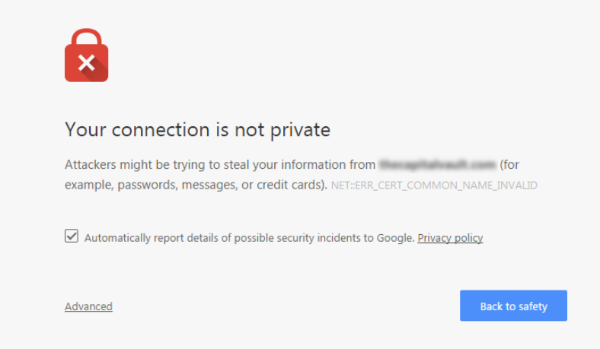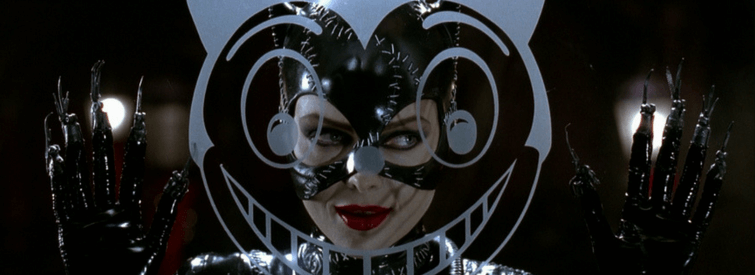Anti-advice: 7 Ways to Hit the Bottom of Search Results
How to
In a world where a brutal war for the top in SERP never stops, there are loads of information about SEO audit. ‘Keep track of Google's algorithms,’ they said. ‘Fix issues regularly, it will lead you to the top’ they said. But we say: ‘Why so serious?’. If you are to die – let there be fire. Here's how to finally drop your website to the bottom of the SERP and breathe freely.
Anti-Advice #1
If there's no risk, there's no thrill! Why bother to choose SSL certificate and switch your website to HTTPS, if the HTTP is not yet banned? So boring…

For real:
Google considers user’s security to be one of the most significant factors. If user clicks on the website without HTTPS or with invalid SSL certificate, the browser will show such warning:

Anti-Advice #2
Let there be as many duplicates as possible! It will double your chances to be indexed by web crawlers. They will definitely find at least one of the website versions.

For real:
Duplicate pages won’t rank highly because search engines can’t determine which one is original. So instead of consistently promoting one page, you lose traffic and risk running into Google Panda.
How to deal with duplicate pages:
- 301 redirect. The easiest way is to redirect the user from the page with duplicate content to the original one.
- rel = canonical. This attribute points search engines to the original page and allows you to concentrate link juice on it. Write canonical URL in the section of the page: <link rel = "canonical" href = "https://penguin.com" />.
- Meta robots 'noindex, follow'. This tag is added to the HTML title tag of the page. It allows search engines to follow links on the page, but not index them.
Here's how to find duplicates using Netpeak Spider:

Anti-Advice #3
Who needs ALT's in images? Can’t robots understand that there is a cute cat on the picture? Why waste your time trying to explain anything to robots?
For real:
Crawlers with all the will in the world cannot unambiguously determine that the picture below depicts Catwoman. But ALT attribute can help them. Moreover, it gives you another opportunity to use relevant keywords. However, if the image does not really convey any value and is a part of design, it’s better to place it in CSS (I’ll explain it a little further on). And by the way, if the image on the website doesn’t load, the text written in the ALT attribute will be displayed instead of a sad broken image icon.

How to write ALT text:
- Brevity. Use up to 150 characters to describe the image. Try to be as specific as possible.
- Keywords, but without spam. Your main goal is to describe the image. If you can use keywords at the same time — good. If you can’t, don’t add them.
Anti-Advice #4
Why do I need meta description when title explains everything? It’s an extra information and a waste of precious time.
For real:
Meta descriptions are displayed in the search results under the title. Despite the fact that in September 2009 Google announced that they don’t affect the ranking, good meta descriptions can improve the CTR of your website and therefore website's position in SERP.

How to write a good meta description:
- Meta descriptions should be meaningful because they help users determine the relevance of your page to their query. However, it must not exceed 160 characters. Search engines just ‘cut’ extra long meta descriptions.
- Use keywords — the main thing is to make sure that they look seamlessly.
- Meta description of every website page should be unique.
- Tags title and description should not duplicate each other.
Anti-Advice #5
Pictures on the website must be large, beautiful and bright to please the eye! Do not listen to anyone who talks about compressing and small size. They just don’t care about their users.

For real:
Optimizing images directly affects website's loading speed. Make sure that images are compressed and are posted in the correct format. If there are tons of small graphical elements on your website, such as icons, buttons and logos, it would be a practical solution to use CSS image sprites. It will reduce the number of HTTP requests to the server, and graphics on your website will weight less.
Anti-Advice #6
Have you ever seen anyone doing serious stuff with a mobile phone? So don’t waste your time on the mobile website versions. All your clients are very serious people who do their business using only a personal computer.

For real:
According to the Stone Temple research, more than 55% of the world traffic comes from mobile devices. Google already tests mobile-first index — the algorithm that will rank mobile version of the website in the first place. There is also mobile-friendly algorithm. It ranks content optimized for mobile devices higher. Therefore, it is necessary to take care of the adaptive design or dynamic display of the website. If you want desktop and mobile versions to be different, consider this in website configuration. Keep in mind to add mobile version of the website to Google Search Console.
Don’t be so quick to rejoice. That's not the end of it. Let me remind you that Google implemented AMP-pages. They are preloaded faster than other website versions. In other words, thanks to AMP, mobile content can be loaded as fast as possible — in up to 0.2 seconds.
Anti-Advice #7
There is no use to speed up your website: let it load as long as possible. As you know, desires are nourished by delays.

For real:
According to Google, if your website is very slow, it affects indexing negatively because search engines need to spend more time on crawling.
Fast loading of the website also influences behavioral factors. After all, no one wants to grow old while page is loading. Conversion decreases accordingly, and bounce rate increases.
How to speed up your website:
- Compression, compression and once again compression. In SEO it’s always the smaller, the better. So if you have CSS, HTML and JavaScript files larger than 150 bytes, compress them. For example, you can use CSS Resizer, Online JavaScript/CSS/HTML Compressor, CSS Compressor to compress CSS. By the way, do not forget to optimize your code by removing unnecessary spaces and comments. Google recommends using YUI Compressor for CSS and JavaScript.
- Cache. Use cache headers for static resources (for example, CSS and JavaScript files, images, etc.). To do this, you should enable caching in your browser for your server. Set duration for a week at least. The length of the caching period can be set in the ‘expires’ header. Now browser won’t have to download your page again, when user comes back to your website for the second time.
- Server response time. The faster, the better, of course. If the server response time is more than 200 ms, you should think about optimization: configure caching of the executable code and check delays of the execution scripts.
- CDN. The further the server from user, the slower the website loading. Content delivery network will help to reduce data transfer and speed up your website.
TL; DR:
If you suddenly decide to become a SEO villain or antihero, this post will help you play your dirty tricks on. But seriously speaking, it's better not to make such mistakes and follow our advice:
- Switch your website to the secure HTTPS protocol.
- Avoid duplicate pages.
- Do not forget to fill ALT attribute when adding images to the website.
- Make correct meta descriptions.
- Optimize images on the website.
- Take care of the website’s mobile version.
- Try to speed up your website.
And speaking about mistakes, what grave sins did you commit while optimizing the website? Don’t hesitate to confess in comments!



